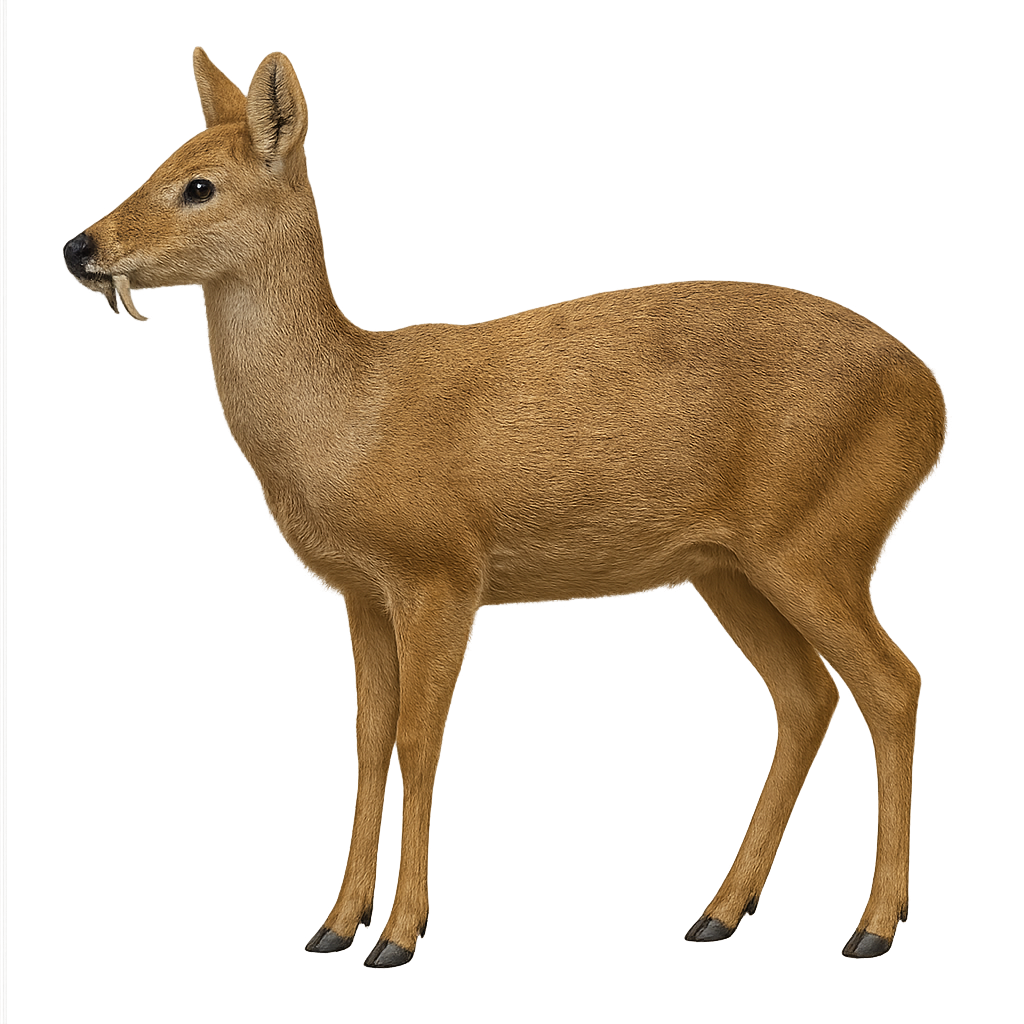Your wildlife photography guide.
Explore the water deer in detail, study its behavior, prepare your shots.
Where to observe and photograph the water deer in the wild
Learn where and when to spot the water deer in the wild, how to identify the species based on distinctive features, and what natural environments it inhabits. The WildlifePhotographer app offers tailored photography tips that reflect the water deer’s behavior, helping you capture better wildlife images. Explore the full species profile for key information including description, habitat, active periods, and approach techniques.
Water deer
Scientific name: Hydropotes inermis

IUCN Status: Least Concern
Family: CERVIDAE
Group: Mammals
Sensitivity to human approach: Tolerant
Minimum approach distance: 20 m
Rut period: December
Gestation: 180-210 jours
Births: June to July
Habitat:
Wetlands and riparian woodlands
Activity period :
Primarily active during the day, with peak activity in the morning and late afternoon.
Identification and description:
The water deer is a small semi-aquatic deer, 45–55 cm at the shoulder, with tawny fur and an elongated muzzle. Native to China and Korea and introduced in parts of Europe, it inhabits marshes, rivers, and wetlands, feeding on aquatic plants, grasses, and riparian thickets. Solitary and crepuscular, it often moves under vegetative cover.
Recommended lens:
300 mm – adjust based on distance, desired framing (portrait or habitat), and approach conditions.
Photography tips:
Photograph the water deer at dawn or dusk using a telephoto lens of ≥300 mm from a concealed hide near the water. Use a fast shutter speed to freeze motion and maintain a distance of at least 20 m to avoid disturbance.
The WildlifePhotographer App is coming soon!
Be the first to explore the best nature spots, track rutting seasons, log your observations, and observe more wildlife.
Already 1 431 wildlife lovers subscribed worldwide

